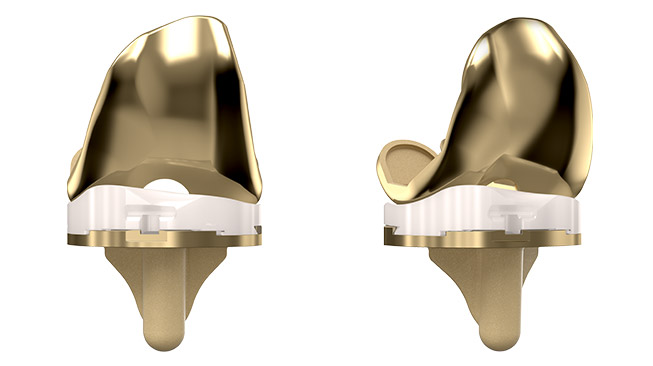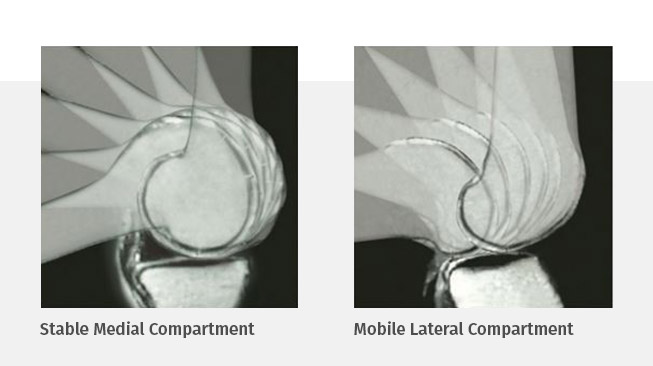Evolution® Knee Systems
The Evolution® Medial-Pivot knee system is designed to answer the limitations of traditional implants by delivering superior flexion stability, anatomic motion, and wear–limiting design characteristics.
We have placed cookies on your browser to help make this website better. By continuing to browse or by clicking “Accept All Cookies,” you agree to the storing of first- and third-party cookies on your device to enhance your experience, analyze site usage, and assist in our marketing efforts. You can change your cookie settings at any time. Cookie Policy >
The Evolution® Medial-Pivot knee system is designed to answer the limitations of traditional implants by delivering superior flexion stability, anatomic motion, and wear–limiting design characteristics.
The Evolution® medial-pivot knee system is built upon a legacy of 95% patient satisfaction with 98.8% survivorship at 17 years1, and features a design that enhances quadriceps efficiency, allowing for improved proprioception.
To achieve postoperative satisfaction, patients want their implant to deliver high functionality and a more natural feeling. The single-radius design and decreased AP translation of the Evolution® knee system provides stability through all phases of flexion. This represents a dramatic advance over traditional knee replacements, which have been shown to exhibit anterior-posterior translation that can decrease stability and cause early revisions.2,3
“The return of range of motion is much faster, they get much better motion and they get it quicker. They're out of the hospital sooner, their pain is better and they seem to get back to the activities that they want to do at a much quicker rate.”
- Dr. Joseph Assini MD, Englewood, CO
Individual results and activity levels after surgery vary and depend on many factors including age, weight and prior activity level. There are risks and recovery times associated with surgery and there are certain individuals who should not undergo surgery.
This individual is a paid consultant for MicroPort Orthopedics. The opinions expressed are theirs alone and do not necessarily reflect the opinions of MicroPort Orthopedics Inc.

The Evolution® NitrX™ medial-pivot knee features a titanium niobium nitride (TiNbN) coating that has been shown in a simulated walking test to reduce the release of cobalt (Co), chromium (Cr), nickel (Ni), and molybdenum (Mb) ions common in standard CoCr implants.7 The Evolution® NitrX™ knee maintains the kinematic benefits of the medial-pivot design8, resulting in optimal stability.9

It is routine for patients to complain of instability following a traditional knee replacement. Studies also clearly show instability to be the leading cause of early revisions.4-6 By delivering a more secure, highly conforming articulation, the Evolution® medial-pivot knee system provides the kind of stability throughout the range of motion that patients seek.
PRECAUTIONS & DISCLAIMERS
Every patient is different, and individual results will vary. There are risks and recovery times associated with surgery.
Not all products and options are available in all countries.
Surgeons in over 70 countries utilize MicroPort Orthopedics Hip & Knee products. Our national sales team is ready to answer any question you have.
